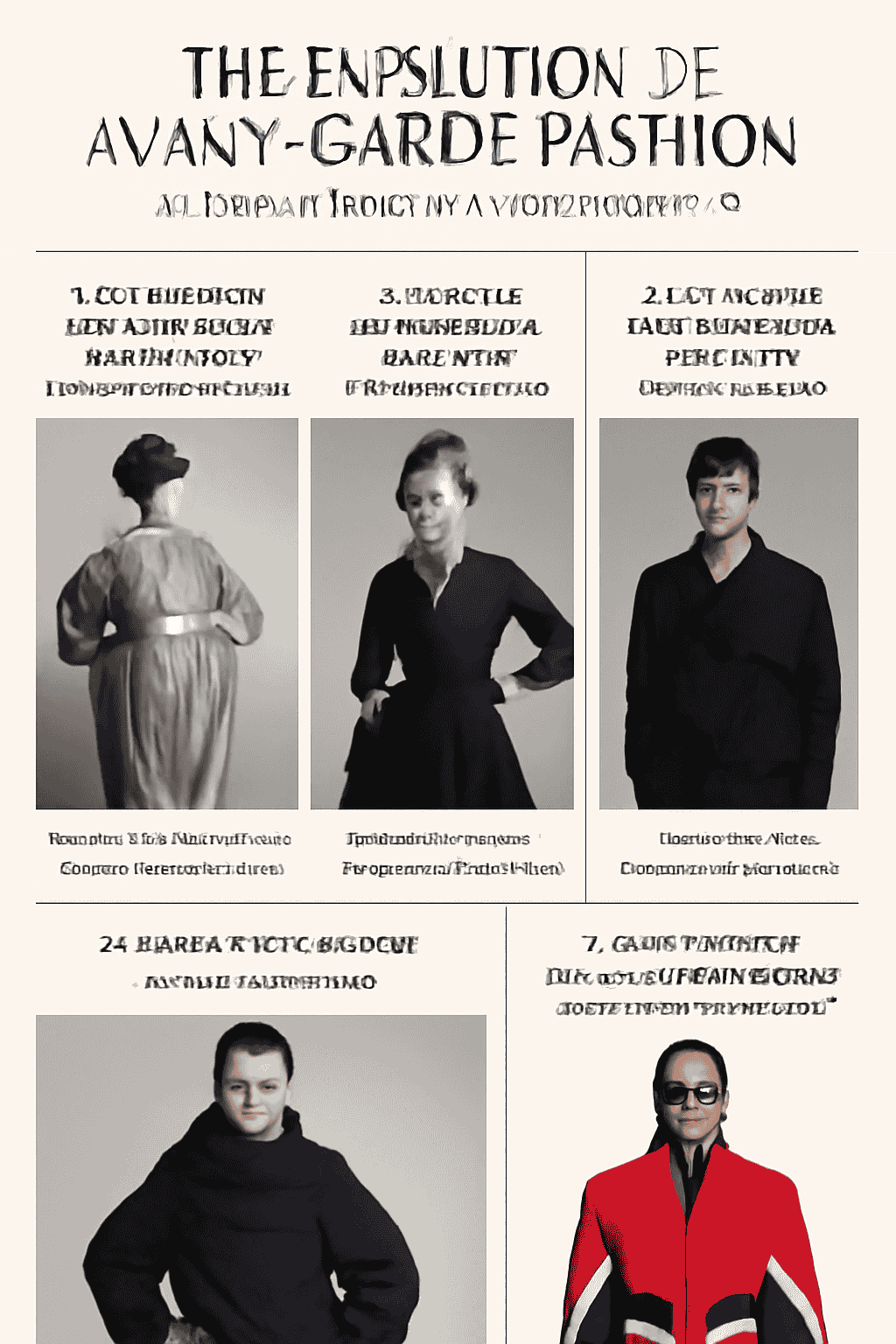Avant-garde fashion, distinguished by its ingenuity and unique style, has been influential in the world of fashion. It is known for its boldness and for challenging conventional norms. The avant-garde style was born during the early 20th century, and has since been a major aspect of modern-day fashion. The article will look at the evolution of avant-garde style, beginning with its earliest roots and ending with its influence on current fashion designers and trends.
1. The Birth of Avant-Garde Fashion in the Early 20th Century
At the beginning of the 1900s, avant-garde style was defined primarily through the influences of the modernist art movements, like Dadaism, as well as Futurism. These movements challenged traditional fashions, as did the emergence of avant-garde fashion designers. At the time, fashion was largely focused on the extravagant fashions of the Victorian period; however, the shift towards aesthetic, practical, and experimental designs started to develop.
Designers such as Paul Poiret were among the first to push the boundaries of traditional designs, making more fluid garments that were less restrictive. Poiret’s designs, like the Kimono-inspired harem pants and kimono pants, set the stage for the modern avant-garde fashion revolution.
2. The Post-War Avant-Garde Explosion: 1940s-1960s
After World War II, avant-garde fashion took form, fueled by the desire to reinvent within the world of fashion. Designers such as Christian Dior revolutionized women’s fashion by introducing his New Look in 1947, which was extremely feminine and well-structured, and also a departure from the era of wartime poverty.
The 1960s were a time when fashion that was avant-garde was able to take a radical turn due to the political and social turmoil. Designers like Yves Saint Laurent embraced bold and innovative concepts in the 1960s, breaking gender norms and introducing new styles such as the tuxedo designed for women. The youth revolution, coupled with counter-cultural movements, produced an ideal environment for avant-garde fashions to thrive with minimal and unconventional designs, gaining recognition.
3. The Rise of Iconic Avant-Garde Designers: 1970s-1990s
In the second half of the 20th century, avant-garde fashion became popular through the rise of many revolutionary designers, most notably Rei Kawakubo as well as Issey Miyake.
Rei Kawakubo’s Comme des Garçons brand, established in the 1970s, was crucial in defining avant-garde fashion during the 1980s. Her collections were bold as well as controversial. They challenged conventional notions of beauty and form. Her designs were renowned for their deconstructionist ethos, and often, the clothes were large, asymmetrical, and didn’t have a usual fit.
Issey Miyake, on the contrary, explored the use of the world of fashion using technology and created clothes that used pleating techniques as well as unusual fabrics. His 1990s collection featured original designs like the famous “Pleats Please” collection, which proved the way that avant-garde fashion can combine technology with traditional workmanship.
4. Avant-Garde Fashion in the 21st Century
In the late 2000s, avant-garde fashion was fully integrated into the mainstream, but it remained an alternative to commercial mass-market fashion. Designers such as Alexander McQueen, Martin Margiela, along Rick Owens took avant-garde fashion in new and exciting directions, merging conceptual art with fashionable designs.
This digital age has been a major influence on the fashion industry’s avant-garde. Social media, technology as well and fast-fashion have all played an important part in bringing avant-garde styles all over the world. Today, designers aren’t just focused on creating physical environments but are also exploring the digital realm, experimenting with digital runway shows.
5. The Influence of Avant-Garde Fashion on Contemporary Designers
In the present, avant-garde fashion continues to influence contemporary fashion designers. Fashion houses such as Balenciaga, Valentino as well and Gucci incorporate avant-garde elements in their collections, either by incorporating extreme silhouettes, surprising patterns as well or collaborations with artists.
Fashion is becoming increasingly about self-expression and individuality, and avant-garde fashion designers are leading this trend. Utilizing sustainable materials, innovative designs, and even collaborations with tech companies are only a few of which avant-garde style is influencing the future.
Conclusion
From its rebellion-driven beginnings in the 20th century until its gradual integration into the modern world of fashion, Avant-garde fashion has experienced an incredible transformation. The trend continues to challenge the boundaries and challenge the status quo, influencing everything from streetwear to haute couture. As fashion evolves and evolve, we can be certain that avant-garde fashion designers will continue creating new ways of looking in the market of fashion.
